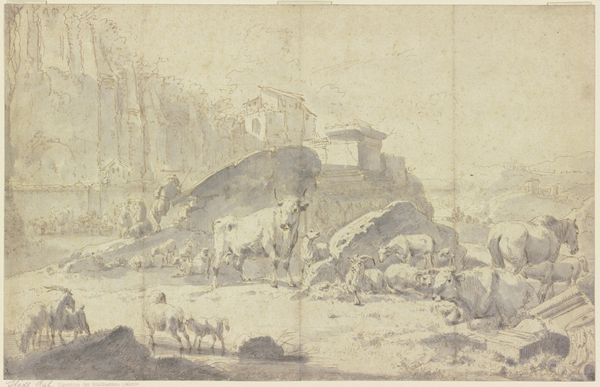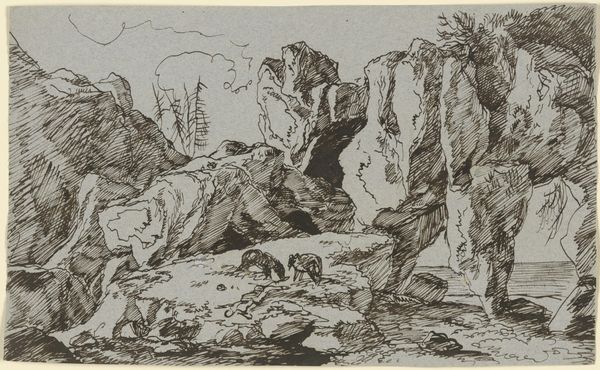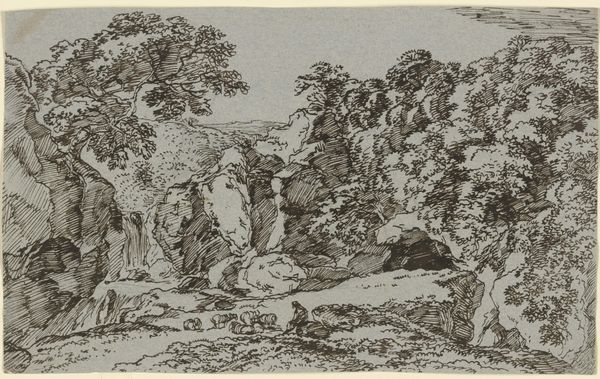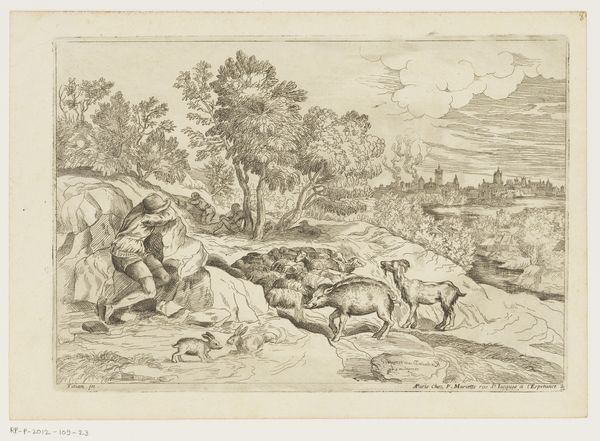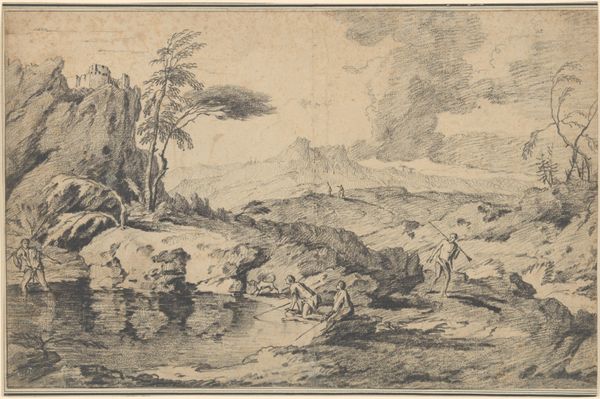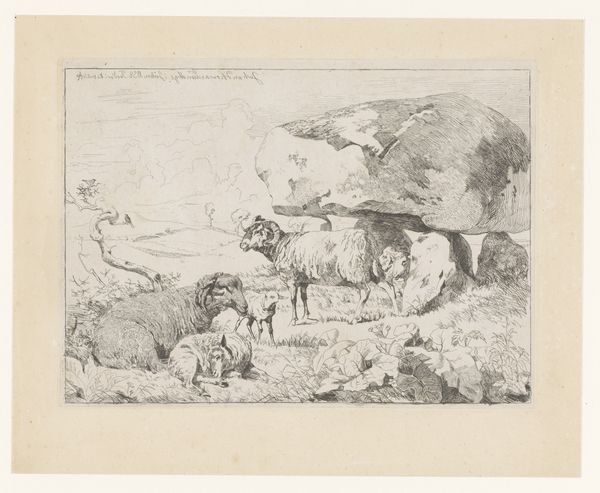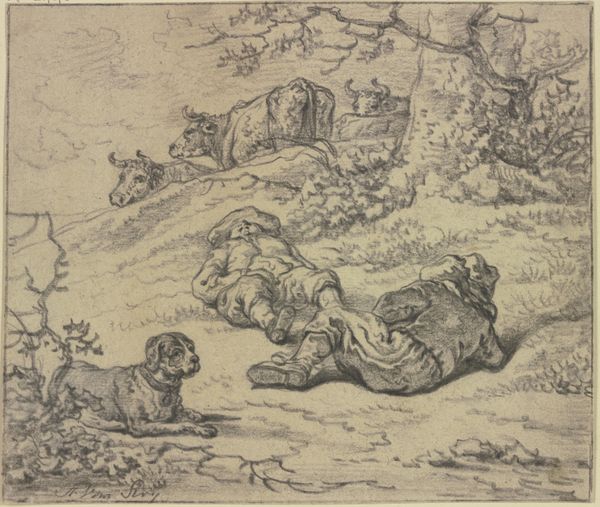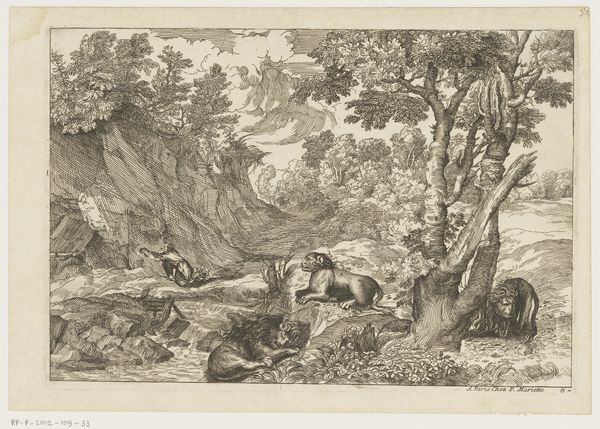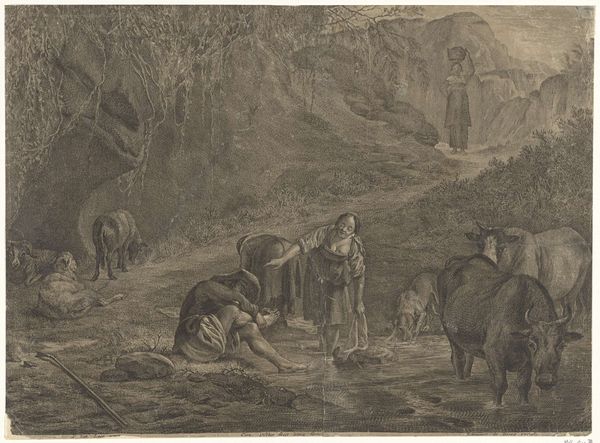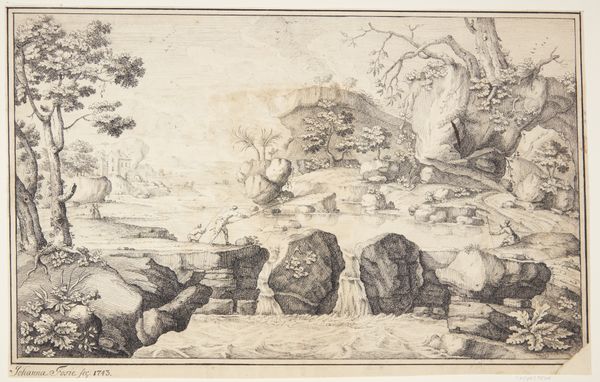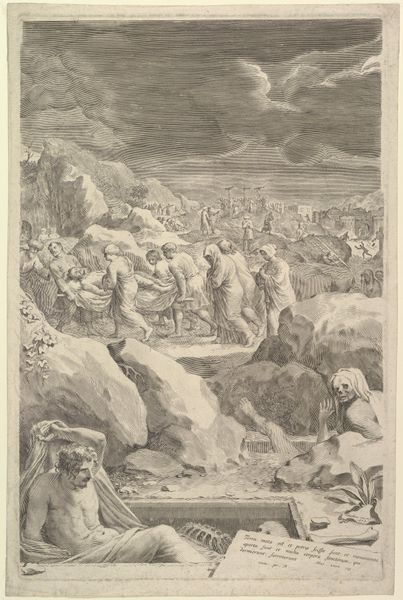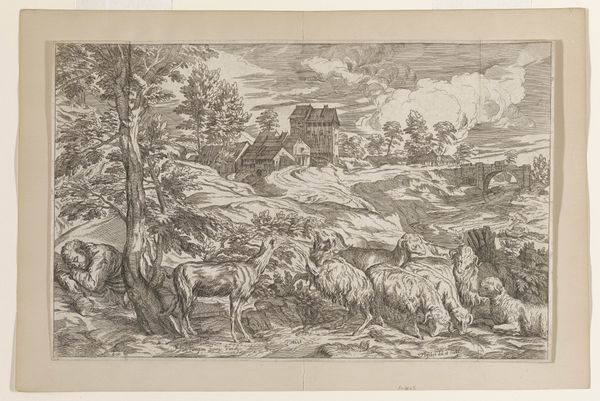
Ziegenherde mit einem Hund, hinter einem Felsblock eine alte Hirtin mit einem Kind
0:00
0:00
drawing, ink
#
drawing
#
baroque
#
landscape
#
cartoon sketch
#
figuration
#
ink
#
genre-painting
Copyright: Public Domain
Curator: Welcome. Before us is a drawing by Friedrich Wilhelm Hirt titled, "Ziegenherde mit einem Hund, hinter einem Felsblock eine alte Hirtin mit einem Kind," held here at the Städel Museum. It depicts a goat herd, dog, and shepherd family set against a stark landscape, rendered in ink. Editor: My initial impression is one of quiet toil, almost mundane. The use of line is stark. Curator: Indeed, the composition strikes me through the arrangement of forms. The angularity of the rocks is counterpointed by the curvaceous forms of the goats and figures, generating a rhythm between hard and soft that sustains visual interest, even though the rendering appears quite rapid. Semiotically, one could read the receding background and high horizon line as a means of creating distance, perhaps indicative of isolation. Editor: I'm drawn more to the material processes at work here. You sense the artist quickly capturing a scene—presumably en plein air—trying to translate observations directly onto paper. It raises questions about Hirt's relationship with the pastoral labor he represents. Was it experienced first-hand, or seen through a distant, perhaps romantic, lens? The simplicity is revealing, highlighting the very basic elements of their material life. Curator: But let's not ignore the nuances in the ink work. See the light hatching on the goats which defines their form; or the varying line weights that distinguish the figures in the background? These elements create a certain atmospheric perspective. Editor: Precisely, and in that contrast lies the tension between romanticized representation and a potentially harsher reality. Consider the dog in the foreground. How involved was this sketch in the making of this scene? How would it play a role to these laborers day-to-day life? How much labour goes into the herding versus how little labour seemingly went into the production of this work, given the lack of cross-hatching and value? It begs a reading of the entire composition and artistic context that avoids idealizing country life and engages in the tangible concerns and working conditions. Curator: I concede to that. Analyzing Hirt’s approach illuminates the power of these elemental components. By examining them independently, and jointly, one unveils deeper thematic layers beyond the apparent pastoral idyll. Editor: And it encourages us to consider the artwork not just as a formal arrangement but as a record, capturing the dialogue between human labour, animal utility, and artistic practice. A vital convergence, isn't it?
Comments
No comments
Be the first to comment and join the conversation on the ultimate creative platform.
